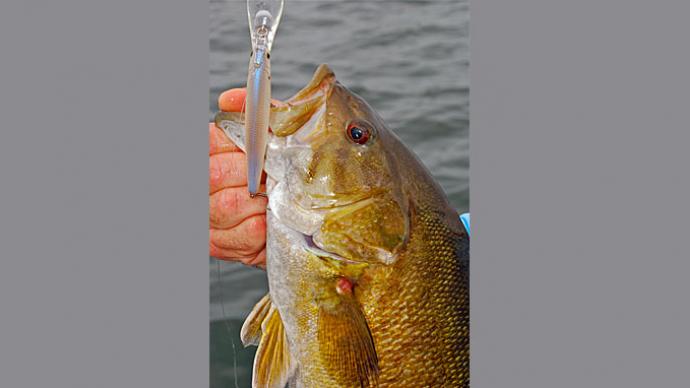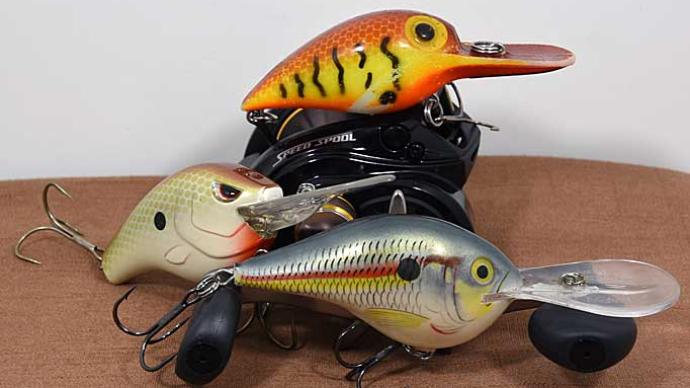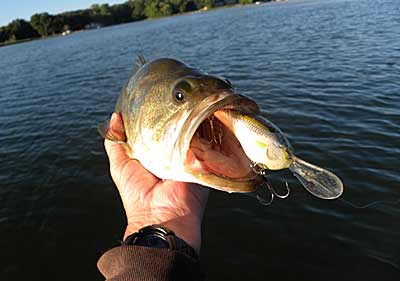
Of all our tactics as bass fishermen, I would choose a crankbait presentation to fish if I could only pick and use just one. Through the years, I have heavily depended on crankbaits to help me find and put bass in the boat when it comes to just fun fishing or when competing in tournaments.
In this article, I will reveal some of my closest-kept secrets in finding the essential structure that will hold bass throughout the year and how I use crankbaits to target these areas looking for bass once found.
Food And Structure Are Key
Just as food is vital for all of us to survive, it's the same for bass. Bass will depend on being close to a food source as we do. The structure will also play a big part in this. Bass not only need food to survive, but they must feel safe in this process as well.
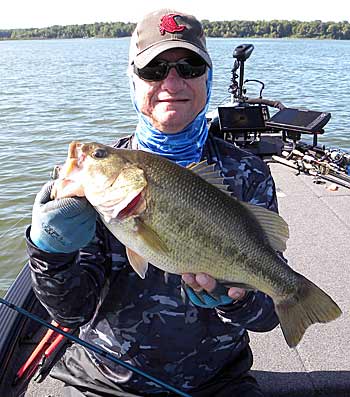
Deepwater rock areas attract good populations of bass, and many times it's about food, such as bluegill in my part of the country. But your part of the county may be a substantial shad population. Then, of course, you can also add crawfish to this food mix. These food staples make up most of the bass’ daily diet.
It's the attraction to this residence, but bass also want the comfort factor. These deeper water haunts offer cooler water during the summer months and warmer water temperatures in the cold water periods to this makeup as well.
To help me find key rock areas, I depend on Humminbird products. Side Imaging allows me to find vital deepwater structures fast. The introduction of Mega Imaging takes this process to another level. The clarity that Mega Imaging provides allows me to pick areas apart easier and better before I even put my trolling motor into the water to start fishing. Add to that Mega 360, and I can tell how every piece of structure lays out in front and around my boat, helping me get my bait into the key areas that hold the biggest bass. Now add Humminbird Mega Live to this mix. Live allows me to look closely at target areas to see if there are fish before fishing.
It's a big plus to use your electronics to help you find critical areas to target, but then you have to break them down better to figure out where the bass are. I can feel the better rock areas with my crankbait that I want to target. I can tell and feel the difference between good rock and minimal areas through years of fishing crankbaits. It took some time to develop, and it came with confidence in my baits and equipment. I can now many times feel my way to the better rock that holds the bigger bass in these rock areas. Add to that the help of my Mega 360 and Mega Live, and you have a win-win situation.
Another step in my learning process is that I often use a Carolina rig as a backup to my crankbait. This is my one-two punch when scouting and breaking rock areas apart. I can tell the differences in the rocks with a Carolina rig, which translates to my crankbait feel. If it's hard to get a Carolina rig through a rock area, I can also tell and feel that difference with my crankbait.
Cranking Game Plan
Once I have found a few rock areas to break down with my Humminbird, I'll start with a crankbait on my first pass through these areas because I can break down areas faster than I can with a Carolina rig. The goal is to get a feel of how the rocks are laid out. Are they stacked or scattered in an area? On my first pass, I'll measure the results of how this goes. If I get a good feel for what is there, I keep looking for bites, but if in doubt, I will slow down and grab a Carolina rig to get a better read of how everything is laid out.
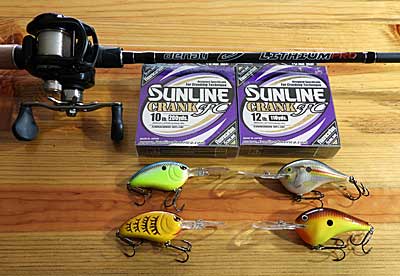
When in the area where I feel and determine is better rock, I'll mark a waypoint. By dropping a waypoint, I'm not marking a specific point. Instead, I'm marking areas to scout as bass could be in one spot one day but may position themselves in a different area close by the next day.
This position change may result from forage repositioning or may have something to do with wind direction changes that day. Wind changes are often responsible for how it positions forage or the bass reposition on the structure to ambush food. Always try to figure out these position changes when the wind changes direction. This adjustment in positioning can result in missing the bass one day but being successful the next.
The casting angle will also come into play in this mix. Part of this may be how your bait hits the rocks during your cast. Play with your casting angles; I have had days when changing my casting angle can get the bite to start because of how the bass are positioned on the structure. Once you have an area where you have caught a couple of bass, try to expand your options from that point.
Another critical point is that once one bite goes cold, pick up another bait to see if you can't activate the bite again or pull a few more fish from the school before it completely shuts down. In my experience, this has been when a casting angle change has paid big dividends.
Equipment Setup
As I have said, getting familiar with your equipment is especially important. Once I found the pieces that worked, I built my system around that and stayed in that realm. For the cranking rod, I'm using a Denali Lithium Pro 7'10" crankbait rod (LP7105XD) teamed with a Lew's BB-1 with a low gear ratio. I use Sunline 10lb Crank FC as my main line choice, if I need to beef this up a little, I'll use 12lb Crank FC for bigger baits.
Regarding crankbaits, I depend on the Rapala DT family of baits to match the depth I'm targeting. These are balsa baits that don't come equipped with rattles. If I need a bait that has sound to help trigger bites, I use the Little John DD 60 and 70 crankbaits from SPRO. These baits are made with a special soft tungsten rattle giving the bait a unique sound.
Over the years, I have found that the best way to maximize my feel with baits is to keep your equipment the same. Of course, you can develop this feel with certain baits on rock bottoms compared to others, but if you switch your equipment or baits, you can throw this feel off.
This overall will result in having to take more time when you break down areas cutting down your efficiency of finding and fishing key areas. It also can affect the feel of the bass hitting the bait, causing you to miss bites. Just as baits are vital in helping catch bass, so are your equipment choices.
Key Notes
There are a few key points that I want to point out when fishing crankbaits. First, the line is your critical link to the bass. Make sure you pick and use a quality line. Skimping on your line choice will cost you eventually. Line is not something you want to overlook, especially when fishing around rocks. When your crankbaits are contacting rocks, take a minute here and there to check your line for nicks the first few feet from your bait. If you feel any nicks take the time to retie your line.
Also, check your hooks as well. It won't take long for your hooks to become dull fishing in the rocks. Show your hooks some love, as it will pay you back big dividends. Carry a small hook hone in your boat to give your hook points a quick tune-up. Often bass will swipe at a crankbait as it goes by. If your hooks are dull, you may hook the bass but lose it a few twists or turns later. Take the time to make sure your hooks are sharp. Losing a bass in this situation will not only cost you a bass but may also shut down the school.
I hope these tips and tactics help you this season. Crankbaits are a viable presentation to catch bass all season long if you give them a chance. Take the time to put a crankbait system together and stick with it once you get it dialed in. Don't change what works. It will pay big dividends.
BassResource may receive a portion of revenues if you make a purchase using a link above.


